Most of us are accustomed to the ease and convenience of washing our dishes in an automatic dishwasher. At times, however, no dishwasher is available. This publication will teach you ways to safely wash or clean your dishes by hand, which may be necessary when your dishwasher is broken, you are outdoors, or you are working in a facility without a dishwasher.
In food service facilities, three-compartment sinks are used for dishwashing. The first compartment is used for washing, the second is for rinsing, and the third is for sanitizing (Labensky, Hause, & Martel, 2011). Although these three-compartment sinks are not common in homes, you still need to follow the three steps of washing, rinsing, and sanitizing to clean dishes. This will help to prevent the transmission of foodborne pathogens (US Department of Health and Human Services, 2013).
Steps to Safely Washing Dishes By Hand
What You Need
- Three large, stainless steel bowls or durable plastic containers approved for use in this capacity (The bowls should be 8–16 quarts or large enough to fit your largest dish; available at most stores that carry kitchen supplies.)
- Dishwashing soap
- Clean sponge, scrubber, brush, and/or dish cloth
- Hot water for washing (110°F) and for sanitizing (171°F), if available
- Household, unscented chlorine bleach for preparing a sanitizing solution (the US Department of Health and Human Services recommends one tablespoon of chlorine bleach to one gallon of water)
- A thermometer to test water temperature
- Plastic gloves to protect hands
The Steps
-
Discard: Before you begin washing your dishes, scrape off any excess food from the surface and discard it (Figure 1).
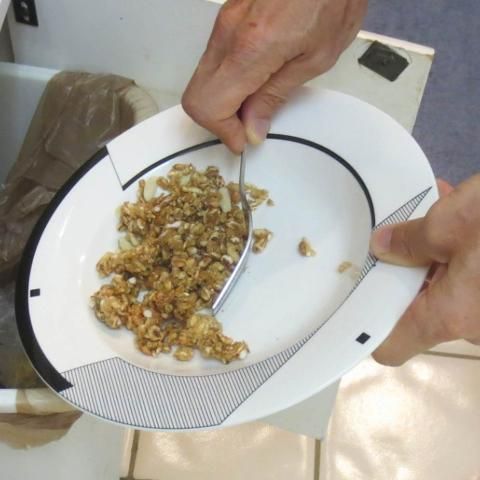
Credit: Amy Simonne
2. Set Up: Then, set up a three-compartment "sink" (Figure 2).
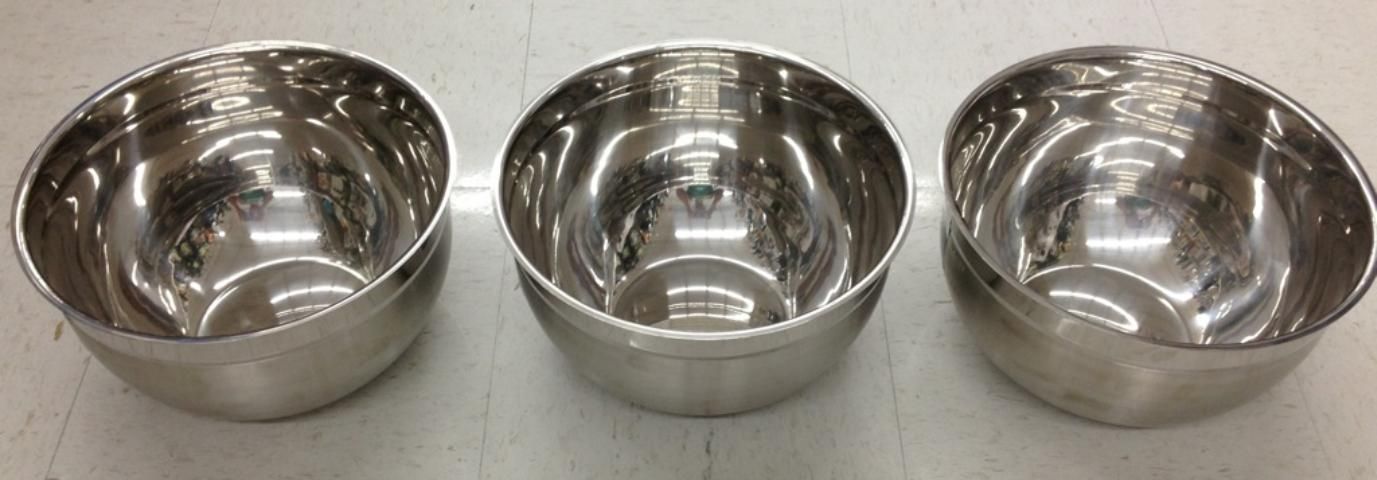
Credit: Ricki McWilliams
3. Wash: In the first compartment/bowl, use an appropriate brush, sponge, or cloth to wash the dishes with soap and water (Figure 3). If a facility has a water heater, use warm water (110°F) for washing and rinsing. Warmer water temperatures ease the washing process. If a facility does not have hot water, it is ok to use cold water; however, the sanitation step becomes even more important (Oregon State University Extension 2006).
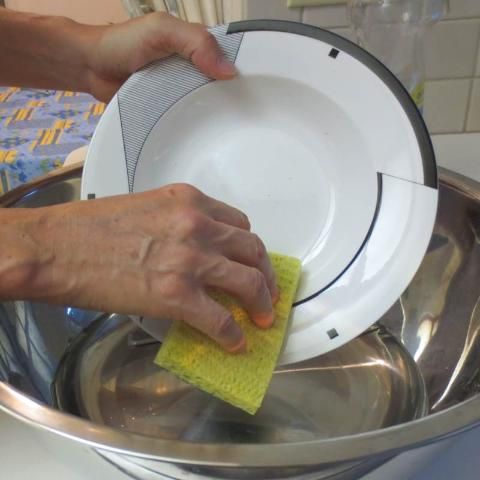
Credit: Amy Simonne
4. Rinse: In the second compartment/bowl, use clear, clean water to rinse the dishes (Figure 4). Be sure to keep the clear, clean water and sanitizer at the appropriate temperature. If the water gets cold or dirty, then empty, clean, and refill the bowls as needed.
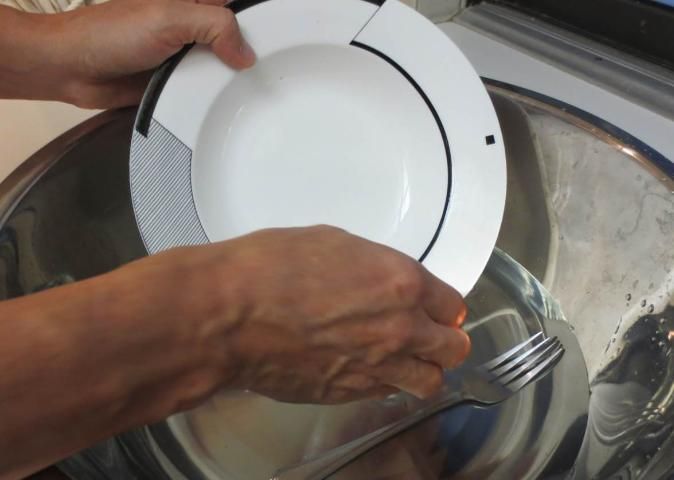
Credit: Amy Simonne, UF/IFAS
5. Sanitize: For extra protection, sanitize the dishes. If hot water is available, fill the stainless steel bowl with hot water (171°F) and submerge the dishes for 5–10 minutes to sanitize. If hot water is not available, fill the stainless steel bowl with the sanitizing solution (one tablespoon of chlorine bleach to one gallon of water) and submerge the dishes for 5–10 minutes to sanitize (Figure 5).

Credit: Amy Simonne
6. Dry: Allow dishes to air dry on a dish rack, if available. Using a towel to dry dishes may re-contaminate them.
Helpful Hints
- Wash smaller, less dirty dishes first to keep the water cleaner for longer (Oregon State University Extension, 2006). For example, wash glassware, dishes, cups, and silverware before pans.
- Loosen hard-to-remove food in large pans by adding water and heating them on the stove.
- Check the water temperature every few minutes to know when you need to replenish it.
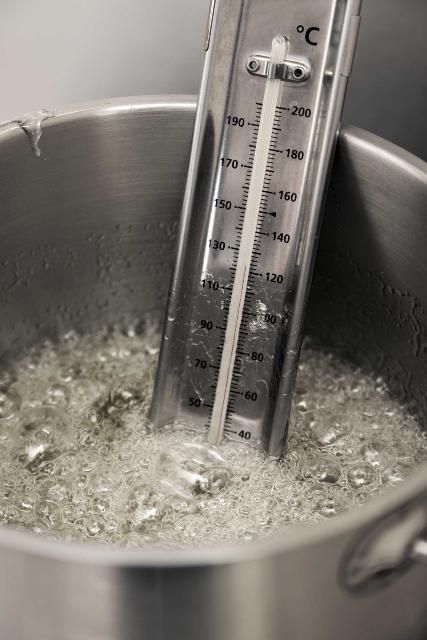
Credit: eyewave iStock
Cleaning Special Items
Cutting Boards
Cleaning cutting boards avoids cross-contamination. Make sure your cutting board does not have any deep, hard-to-clean scratches because these areas harbor bacteria. After preparing raw meat, fish, or poultry on the cutting board, use the methods below to safely clean your board (Oregon State University Extension, 2006).
- Use a paper towel to wipe away any juices. Do not use a sponge or dish towel because these come into contact with other surfaces, making cross-contamination an issue.
- Even if you have a dishwasher, clean wooden cutting boards by hand.
- Follow the steps for cleaning dishes described above (wash, rinse, and sanitize).
Sensitive Dishes
If you are cleaning easily scratched materials, such as china plates, you will need to use special care to prevent damage. Use a soft rubber spatula to scrape away food, and rinse the dishes with water. It can be helpful to line the bottom of your sink or bowls with a rubber mat or dish towel and wash dishes one at a time. Water should be warm and not very hot because that could possibly shock and break the dish.
Sponges and Dish Towels
Since your dish towels and sponges can harbor bacteria and mold spores, keep them clean. Wring your dish towels and sponges out when you are done using them, and hang them to dry to prevent mold and bacteria growth. You should also clean them after each use, sanitize them often (every two to three days), and replace items when they are well used. If you notice an unpleasant smell, either replace or clean the item. To wash a dish towel, simply put it in the washing machine. To sanitize a sponge, wet it completely, and place it in the microwave for two minutes. Since it is dangerous to heat a dry sponge in the microwave, make sure the sponge is completely wet (Michigan State University Extension, 2012). Experts recommend using a dish towel instead of a sponge because a towel is easier to keep clean (Oregon State University Extension, 2006).
- Water filters and water sanitizing or purification tablets for washing dishes can be purchased from camping supply stores (USDA, 2011).
- Use clean bowls/buckets to set up a dishwashing station.
- If you have a burner or open fire, you can boil or heat water for washing, rinsing, and sanitizing.
- If possible, use biodegradable soap to avoid adding chemicals to the environment when you pour out your wastewater (USDA, 2011).
References
Labensky, S.R., Hause, A.M, and Martel, P.A. (2011). On Cooking: A textbook of culinary fundamentals (5th Ed). Upper Saddle River, NJ: Prentice Hall.
Michigan State University Extension. (2012). Washing dishes – are those dish cloths and sponges harboring bacteria? http://msue.anr.msu.edu/news/washing_dishes_are_those_dish_cloths_and_sponges_harboring_bacteria
Oregon State Extension. (2006). Stop germs: Kitchen clean-up. https://catalog.extension.oregonstate.edu/ec1552
USDA Food Safety and Inspection Service. (2011). Food safety while hiking, camping, and boating. http://www.fsis.usda.gov/wps/wcm/connect/82318e67-8c96-47ac-8615-747f4c403816/Food_Safety_While_Hiking_Camping_Boating.pdf?MOD=AJPERES
US Department of Health and Human Services. (2013). Keep food safe. http://www.foodsafety.gov/keep/basics/clean/